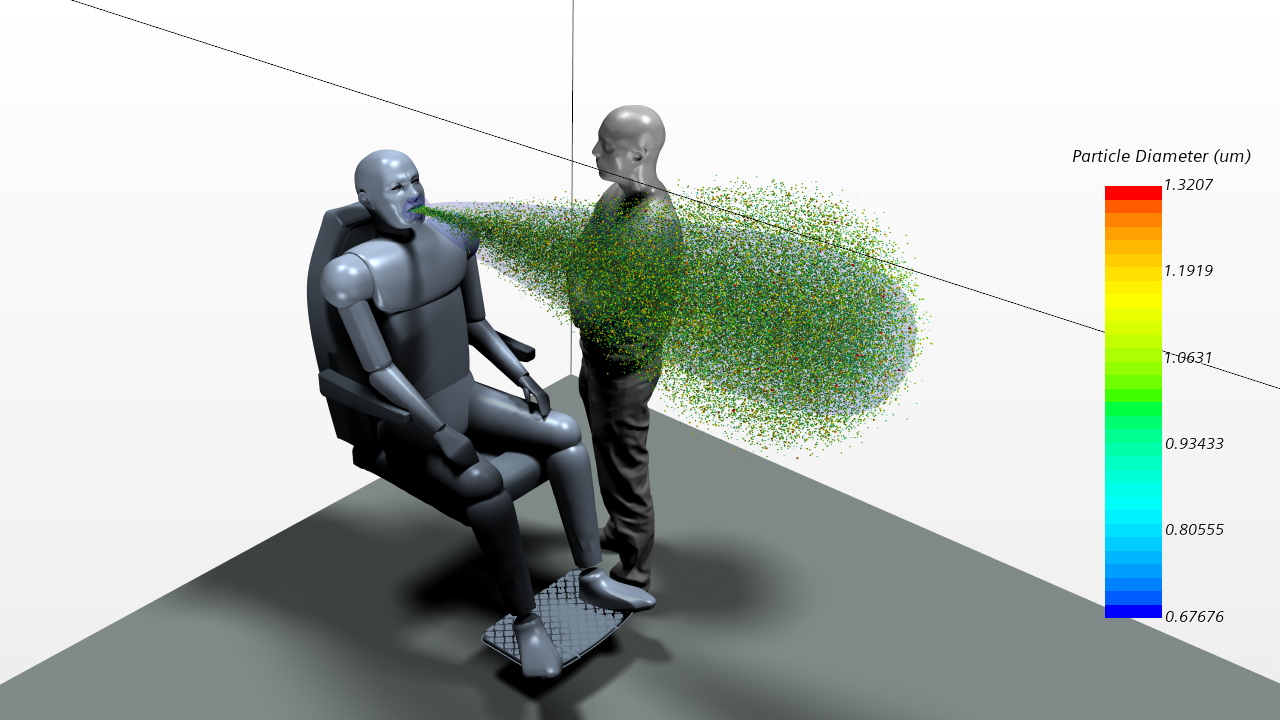Airborne pathogens
CFD simulations on the exposition of physicians to airborne pathogens during standard airway assessment
Du ring the current COVID-19 pandemic, worldwide many clinical personnel were infected resulting in severe illness and even death. Current knowledge suggests that the majority of transmissions was caused by infectious aerosol particles and droplets. Hence, in the course of the pandemic, routine airway assesssment procedures have been highly reduced, adapted or even not executed at all. To resolve this clinical dilemma, we use an interdisciplinary approach applying computational fluid dynamics (CFD) simulations based on experimental studies in the immediate clinical environment.
ring the current COVID-19 pandemic, worldwide many clinical personnel were infected resulting in severe illness and even death. Current knowledge suggests that the majority of transmissions was caused by infectious aerosol particles and droplets. Hence, in the course of the pandemic, routine airway assesssment procedures have been highly reduced, adapted or even not executed at all. To resolve this clinical dilemma, we use an interdisciplinary approach applying computational fluid dynamics (CFD) simulations based on experimental studies in the immediate clinical environment.
We study different paradigms for common clinical airway assessment procedures in real life settings. Simulations include ptients wearing masks and not wearing masks. We use the experimental gathered data as input and boundary data for computational fluid dynamics (CFD) high-performance-computation simulations where we compute the 3D disperion of droplets and aerosol. The CFD simulations focus on minmal and maximal airborne pathogene distribution in the assessment room during and immediately after the procedures.
The simulations provide aerosol dispersion, trajectories of droplets and critical flow regions around the location of intervention during laryngoscopic exams. This will enable to estimate risks, provide clinical colleagues with preventive measures and ensure maximal safety for medical personnel during the current and future airborne based pandemics.
